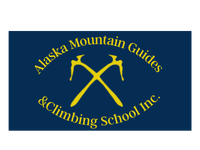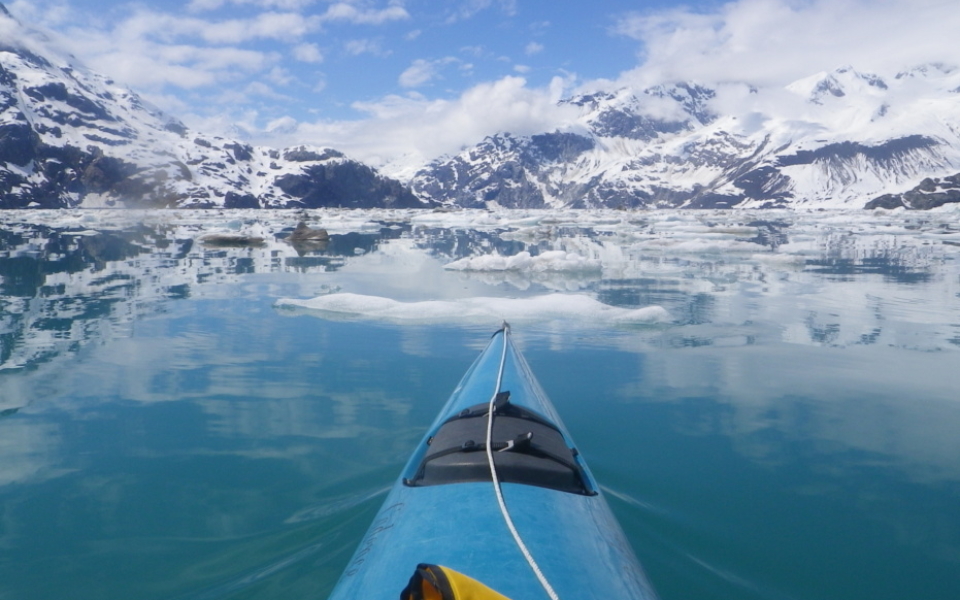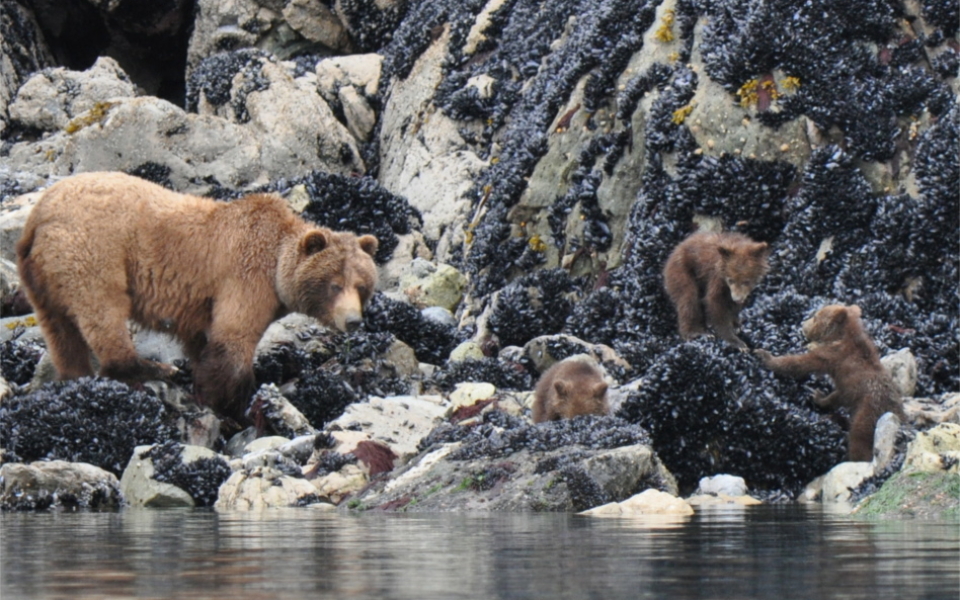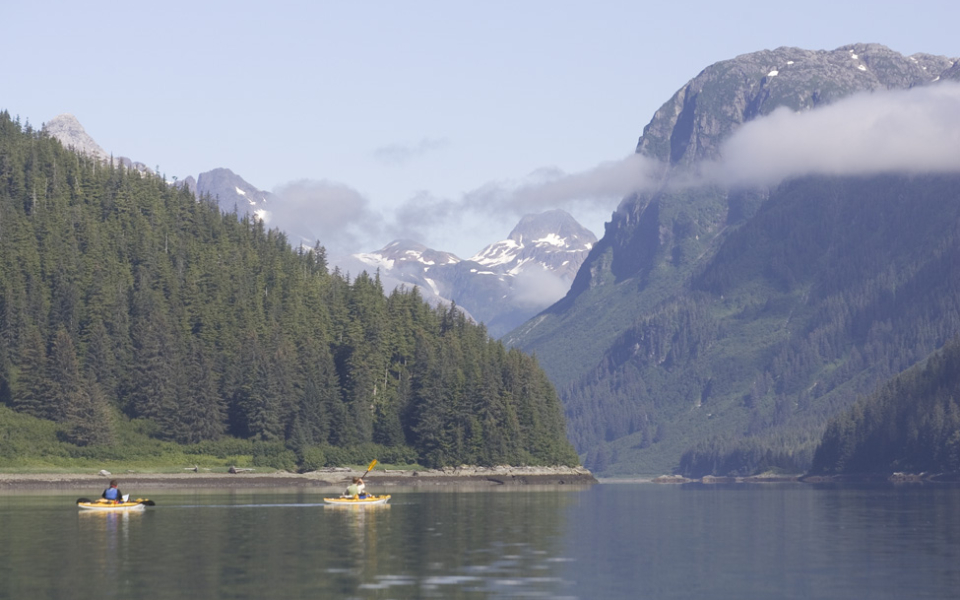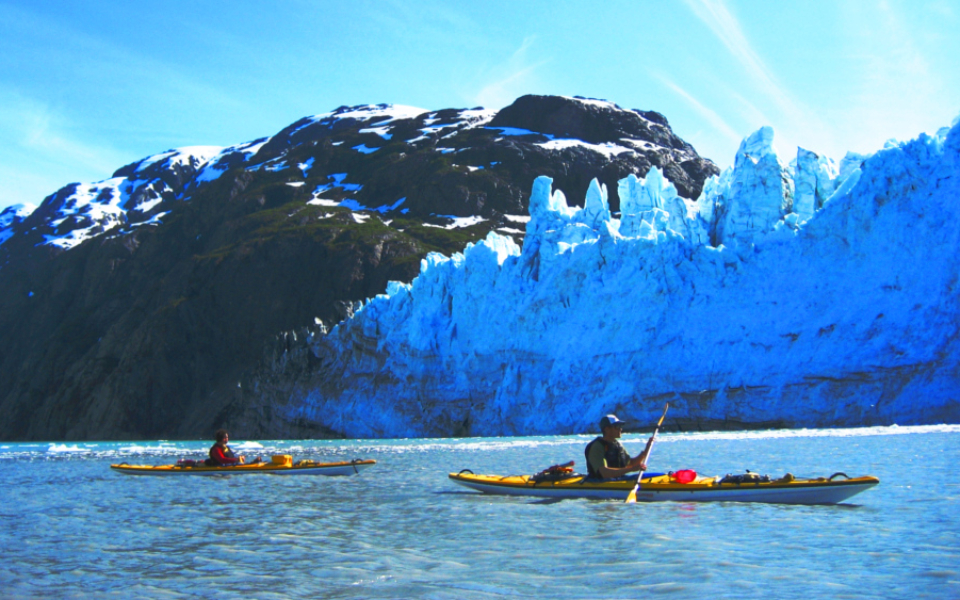Experience the magic of paddling among the icebergs in deep glacially carved fjords and alongside whales, then enjoy quiet nights under the stars in the jaw-dropping beauty of Glacier Bay's West Arm.
Trip Photos
Trip Notes
Meeting Point: Gustavus, AK
Destination: Glacier Bay National Park
Duration: 7 days
Price: $3550 (+ tax, in USD)
Activity Type: Kayaking
Season: June, July, August
Guide to Guest Ratio: 1 to 6
Difficulty Level: 2 out of 5
Paperwork Required: Registration, Health Form, Risk Acknowledgment
CLICK HERE FOR DATES & PRICES
Related Trips:
Trip Description
This Glacier Bay sea kayaking trip explores the famous West Arm of Glacier Bay, the premier sea kayak destination in Alaska.
John Muir came to Glacier Bay in 1879 and was so stunned by its epic beauty that immediately upon his return he began to secure wilderness protection for this spectacular region he called “unspeakably pure and sublime”. Come join us as we retrace the famous naturalist’s route, and observe how the dynamic world of the bay changes continuously as receding glaciers reveal new landscapes.
Glacier Bay’s fascinating geology, plentiful wildlife, and breathtaking scenery of soaring mountains and gorgeous tidewater glaciers are the setting for an unforgettable wilderness sea kayaking experience. We will travel into the spectacular Rendu, Tarr, and John Hopkins inlets to view tidewater glaciers, magnificent waterfalls, and numerous hanging glaciers. We will also have the opportunity to see Humpback and Orca whales, sea lions, seals, salmon, bald eagles, black and brown bears, and more.
We will explore wild beaches, watch wildlife, and enjoy short hikes in the foothills of the Fairweather mountain range. Experience the magic of paddling among the icebergs in deep glacially carved fjords and enjoy quiet nights under the stars.
Throughout the journey professional sea kayak guides will provide a safe and fun experience and also offer sea kayaking instruction including general navigation, beach landings, and paddling technique.
Join us in Glacier Bay’s West Arm for an unforgettable experience!
GUSTAVUS: Gustavus, Alaska is the starting/finishing place for this trip. Gustavus is a small community located along Icy Strait in Southeast Alaska. This is the headquarters for the park service. Gustavus is easily accessed with several flights departing Juneau, Alaska daily. Ferry service is also available. We will spend the evening before and after our trip here.
GETTING TO THE WEST ARM: This trip is scheduled to use a Glacier Bay boat shuttle to take us from Gustavus to the to the Queen Inlet drop-off point. We will begin exploring the West Arm from there. The shuttle boat is a great experience in and of itself, offering great wildlife viewing potential on our way up towards the West Arm.
KAYAKING: Paddling among ice bergs, in front of glaciers, and under the majesty of the towering peaks of Glacier Bay is a unique and serene experience. Our guides are also experienced paddlers and can help teach paddling technique and skills to make your adventure the most enjoyable.
GLACIER BAY NATIONAL PARK: Glacier Bay National Park and Preserve is located in southeast Alaska and includes some of the wildest and most spectacular fjords and glaciated terrain in the world. As a unique marine wilderness, Glacier Bay provides countless adventures and stunning views of glaciers, wildlife, and majestic maritime and mountain scenery.
OUR GUIDES: Alaska Mountain Guides & Climbing School Inc. instructors and guides are professionals. They have a wealth of experience from guiding throughout Alaska and the world and they genuinely enjoy sharing their knowledge. Their skill and positive attitudes help our guests to have the best possible experience during their trip. Your safety and enjoyment are their primary goals.
Trip Itinerary (in a printable PDF format)
Day 0: Our trip begins with our pre-departure meeting at 5 pm the night before your trip. During this meeting we will discuss expectations, wildlife considerations, and ensure all guests have the required clothing and equipment for the trip. The location of this meeting will either be at Alaska Mountain Guides headquarters, Bartlett Cove, or at your accommodations for the night.
Days 1-2: Your guide will pick you up at your hotel between 6:30AM and 7:00AM. At 7:30AM we board the Glacier Bay boat shuttle and begin the journey north to our drop-point in the West Arm. Once we arrive at our drop-off we will load boats, give a basic paddling introduction and instruction and begin paddling. We will begin by exploring Rendu Inlet. Here there is a large concentration of waterfalls splashing down the steep cliffs towards the ocean. This area is generally closed to motor vessel traffic and allows us to quietly enjoy the pristine wilderness. We will be wilderness camping on night one and two.
Day 3: After exploring Rendu Inlet we will continue north and west towards Tarr Inlet and John Hopkins Inlet. Here we will have the opportunity to look for whales and other marine mammals near Russel Island. We will be enjoying wilderness camping tonight.
Days 4-5: On these days we will have the opportunity to explore either Tarr inlet or John Hopkins inlet. Both are spectacular locations featuring pristine waters and mammoth glaciers. Tarr Inlet features the 200 foot high face of the Margerie Glacier, one of the most active ice flows in Glacier Bay as well as the Grand Pacific Glacier. The John Hopkins Inlet and surrounding glaciers are believed by many to be the most stunning area in Glacier Bay. Steep valley walls rising over 7000 ft compliment the massive tidewater glacier as well as numerous hanging glaciers. Both areas offer a spectacular opportunity for kayakers to enjoy a unique Alaskan experience paddling amongst the icebergs. Wilderness camping.
Days 6-7: After exploring of the northern reaches of the West Arm, we will begin heading south back to Queen Inlet and our shuttle back to Bartlett Cove. On this section we will have the opportunity to see an assortment of wildlife including marine mammals like harbor seals and humpback whales. We may see terrestrial mammals such as bears and mountain goats, and a variety of bird life as well. We will be camping on night 6. On day 7, we will return to the drop off/pick up point and board the Glacier Bay shuttle boat for our return to Bartlett cove and the conclusion of our trip.
* This itinerary is intended as a general guideline. It can change at any time due to events
or conditions that are beyond our control.
What wildlife will we see in Glacier Bay?
The wildlife encountered in Glacier Bay’s East and West Arms can be vastly different, but some species will be found both places. The East Arm offers a wider variety of land mammals such as moose, both Brown and Black bear, Mountain Goat, Wolves, Sea and Freshwater Otter, and numerous rare birds such as Black Oyster Catchers, Arctic Terns, and varieties of sea ducks such as Scooters, Harlequins, etc. It would be common to sea Humpback Whales in the more southern areas of the East Arm, especially in Sitakaday Narrows and around the Beardslee Islands. It would be possible to see Orcas in the East or West Arms, although on a much lower frequency than that of Humpbacks. The West Arm is known for its’ often high concentrations of Brown Bear, but for the most part is free from the Black Bears that inhabit the southern and eastern shores of the bay. You would be lucky to see a moose in the West Arm, although they may be found. Mountain Goats may be seen in high numbers here, as well as in the East Arm. The West Arm is largely free from marine mammals such as Humpbacks, Orcas, and Sea Lions. Humpbacks do frequent Queen Inlet and the Russell Island area in the West Arm, and the high numbers of Harbor Seals do give the Orca something to come in for. Spotting an Orca in the West Arm would be rare. Similar birds inhabit the West Arm, but the areas near tidewater glaciers such as the Margerie and John Hopkins Glaciers are excellent spots to see Tufted Puffins, Black Leg Kittiwakes, and endangered Kitzlitz and Marbled Murrellets.
What is the weather like in Glacier Bay? What are the best months to go?
Weather in Glacier Bay is similar to the rest of Southeast Alaska, often experiencing cooler temperatures and frequent rain fall. May and June offer the least average rain fall of any months, with July and August precipitation steadily increasing up to the rather wet September and October. Some areas of the Bay, such as the West Arm, are traditionally drier than other areas due to the rain shadow effect produced by the high mountain range (Fairweathers) to the west. Day time temps are in the 50’s more often than not. Paddling/camping near glaciers can be colder, possibly dipping into the low 40’s at night.
Will I be paddling in a tandem or solo kayak?
Tandem (double) kayaks are more stable and the preferred method of paddling for all of our guests. If you have extensive experience, and skilled with self-rescue techniques and comfort with paddling a solo kayak, we are happy to consider making this option available to you.
What are the paddling conditions like in Glacier Bay?
Generally Glacier Bay offers protected paddling in most areas. Lower sections of the bay can experience stronger tides and more wind than upper reaches of the East and West Arms. Although winds may be encountered in all areas of the bay, we emphasize conservative judgment in regards to paddling in such conditions. Glacier Bay is generally an inland sea, and rarely encounters swell or surf conditions from wind found on more exposed coastlines.
What is the Camping like in Glacier Bay? Are there any facilities?
Glacier Bay National Park is a 3.3 million acre designated wilderness area, and offers no facilities or improvements outside of Bartlett Cove, the start and end of our trips. Campsites are often in the intertidal zone on sand or small rocks and gravel. Glacial outwash plains offer flat tenting and good views up and down beaches. You will rarely camp in the forest or among trees in Glacier Bay. No improvements of any kind have been made, and disposing of waste happens in the intertidal zone (beaches) according to LNT practices and Park Service policy. Glacier Bay has a high number of amazing camps with breathtaking vistas, or you may get crammed on a rocky beach if the wind picks up and we have to compromise on a spot. Most sites offer plenty of room to wander on beaches, have a flat well drained site for your tent, and plenty of things and vistas to keep you interested.
What is a typical day like on a trip?
On an expedition, each night will end with a discussion of the next day plans. The route for the day will dictate your wake up time. The guides will greet you for drinks and breakfast, and you can begin to pack up your personal belongings. After breakfast we will break camp, pack the kayaks, and depart for the days paddle. We may stop to check out certain places on shore, or float around and view wildlife or glaciers in one spot for a while. We will stop for lunch, and continue on to our next camp. Sometimes we may scout for camps, and keep paddling due to bear activity or site occupants. Certain days we may base camp and take advantage of lighter boats on day paddles to cover larger distances, or to have a more relaxing down day. The Escape will likely only move camp 1 time, and take advantage of paddling lighter boats and returning to a camp set up already.
How close do we get to glaciers?
Sometimes we may paddle to within a quarter mile of glaciers, exercising much caution at all times. More often than not we will stay 1/3 to ½ mile away from tidewater glaciers, but we may elect to paddle closer to non-tidewater glaciers. Glaciers such as the Lamplugh and Reid, offer good opportunity for getting closer to ice in kayaks and on foot. Good hikes exist near these glaciers, and the risk of calving ice producing waves in much less. Glaciers such as Margerie and John Hopkins actively calve into saltwater and produce large surge and will be given a wide buffer. Getting trapped in floating ice is also a risk to be avoided by not approaching too close.
How do we access the east/west arms of Glacier Bay?
We will utilize the Glacier Bay Lodge Catamaran, a large high speed site-seeing vessel that also provides drop off for kayakers in Glacier Bay. It is not a private charter, and kayakers will be vastly outnumbered by sightseers. It provides lunch and hot drinks if you are on the boat when being served. Wildlife and glacier viewing from the boat is the #1 activity in Glacier Bay for park visitors, and rounds out a kayak trip very nicely.
How much paddling will we do each day?
The desires of the group largely control how much paddling is done. On these trips you can expect to paddle up to 5 hours a day, but daily mileage could be as low as 5-6 miles a day. On shorter trips, we take advantage of base camping so we can paddle lighter boats on day paddles.
Are there hiking opportunities on trips in Glacier Bay?
The only established trails in the park are in Bartlett Cove near the lodge and park headquarters. Glacier Bay provides some limited great hiking on glacial outwash plains, beaches, and rock formations up Bay. Generally, foot travel does not come easily in the Bay, and most hikes will be short hikes to take advantage of a view or stretch the legs. Beach walks provide a great way to pass the time in camp. Bushwhacking is sometimes an option for the hardier folks with patience and tenacity. Most hikes can be done in the rubber boots we provide, but having light weight easily packable day hiking shoes can be a good idea.
What type of food will we eat on kayak trips? Can you handle special dietary needs?
All food for Glacier Bay trips must be packed in bear cans, so this somewhat limits the menu for a trip. Although we use NO Freeze Dried or pre-prepared meals, you can expect to each eat meals with bases such as rice, pasta, and other grains on a nightly basis. Fresh fruits and vegetables can be had most days, and canned and smoked meats and fish add a great source of protein. Meals will be very similar to what you would cook at home, and we definitely aim to please with interested and varied menus and good presentation.
Do I need previous kayaking experience for this trip?
No previous kayaking experience is required, but different trips may require varying levels of fitness. We can suggest a trip to best fit your experience and fitness level, and make every accommodation for you to have a successful and rewarding trip. If you are new to kayaking and wilderness camping, the Glacier Bay Escape may be a good introductory trip with a more relaxed pace.
How difficult will this trip be? What physical fitness level do I need for this trip?
Sea kayaking is not reliant on great upper body strength, but expeditions will require a person to be physically active for up to 5-8 hours each day. In addition to kayaking, you can expect to assist with carrying kayaks over uneven terrain, shuttling gear and bear cans up beaches, and setting up and taking down camp. Shorter trips such as the Escape, offer a more relaxed kayaking pace and less work in the way of making and breaking camp every day. We can recommend a fitness plan to help you prepare for the trip.
Trip Documents:
- Trip Itinerary – Printable detailed trip itinerary.
- Equipment List – Overview of personal clothing and equipment that you’ll need for this trip.
- Rental Gear List – List of Sea kayaking gear, and personal items available for rent
- Registration Form – Outlines policies, and essential information. One required per participant.
- Health Form – This form enables our guides to have accurate health information in the event of an emergency.
- Acknowledgement of Risk Form – One required per participant over the age of 18.
- Travel Info – Helpful information on how to get to/from Gustavus, Alaska.
What is included in the trip price:
- Kayaking & camping gear – group camping equipment, tents, kayaks, paddles, PFDs, etc…
- Expedition food – all food while out in the field
- Transportation during trip – travel to our launch area, boat transfers
- Professional guides – Our guides have extensive knowledge of the area and a passion for kayaking in wild places.
Guests are responsible for the following:
- Personal clothing & equipment
- Food & Lodging in town – most lodges in Gustavus provide quality food options
- Trip insurance – we highly recommend trip insurance for all of our programs
- Airfare
- Reviewing trip policies – please reference our policies page for policies regarding payment, cancellations, refunds and guest responsibilities.
- Gratuities
To Book your adventure, follow the steps below:
-
- Please call to confirm availability at 1-800-766-3396 or fill out an online form to request more information via this link:
- Place a deposit of $500 to reserve your spot: this can be placed over the phone by credit card, check in the mail, or through our payment gateway.
- Once you’ve reserved your spot, you’ll receive a welcome packet with all the necessary registration forms and trip information.
- We kindly ask that you submit all of the necessary trip registration information at least 45 days prior to your trip.
Feel free to call or email anytime if you have questions about your upcoming trip. Our team is excited to help you prepare for your adventure!
Guest Comments:
I've never been more excited before a trip, and this one was well worth the anticipation - what a once-in-a-lifetime experience. I can't thank you guys enough!
- Jonathan D.
